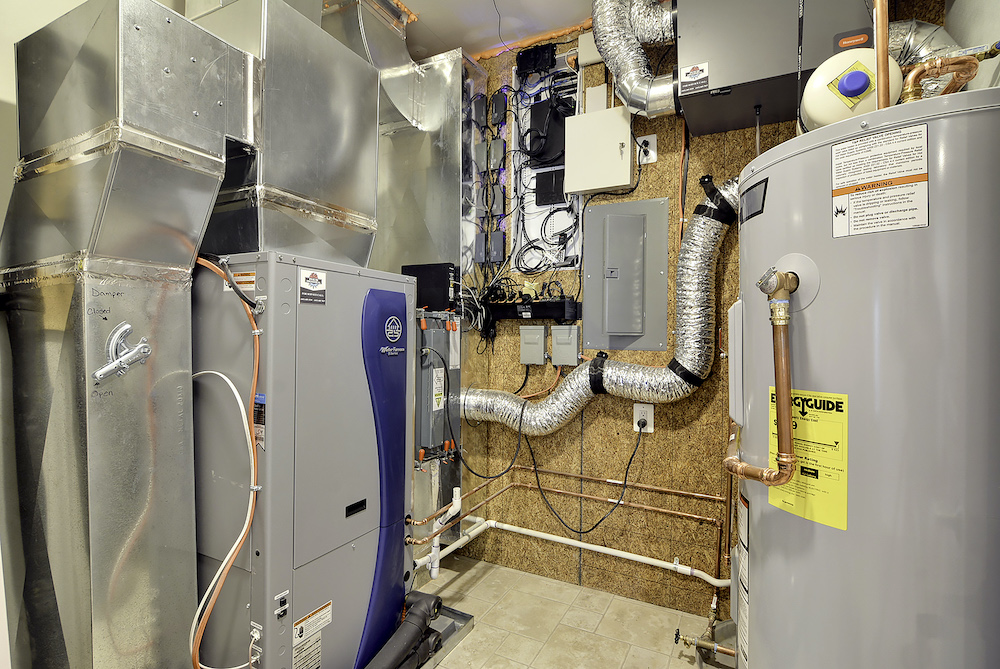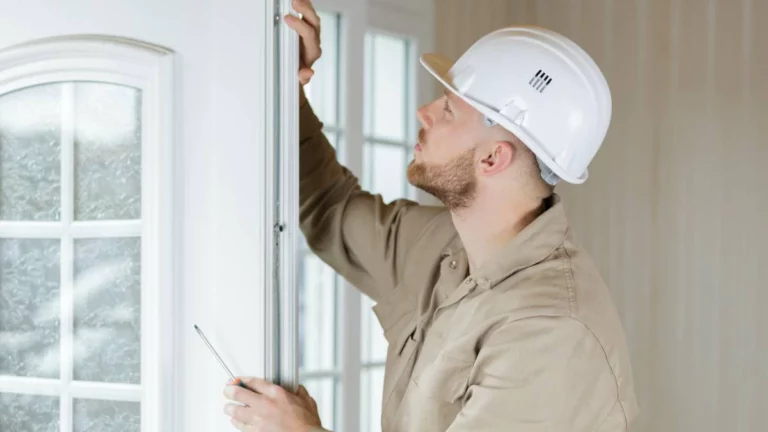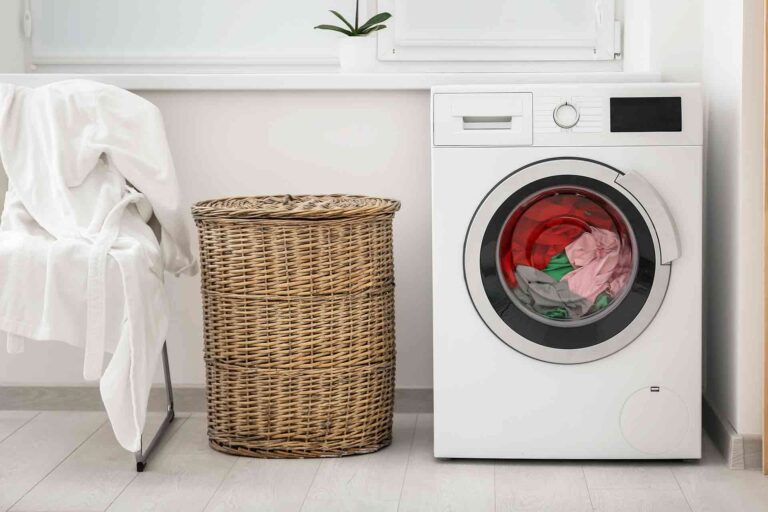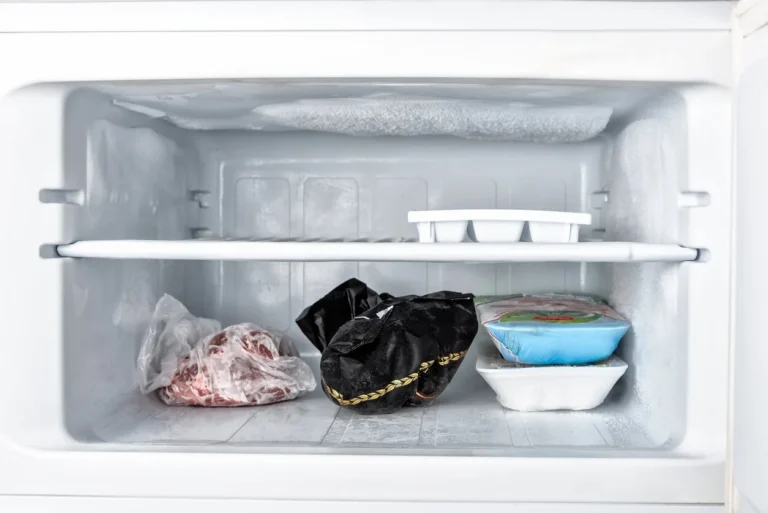What Is A Mech Room In A House? Exploring Its Importance
A mech room, short for mechanical room, is a dedicated space in a house that houses essential mechanical systems and equipment. It serves as the central hub for various systems, including heating, ventilation, air conditioning (HVAC), water heating, and electrical distribution.
The mech room contains components like furnaces, air conditioning units, water heaters, electrical panels, and, in some cases, plumbing connections. These systems work together to regulate the home’s climate, provide hot water, and ensure a steady supply of electricity.
In short, a mech room is the control center for a house’s essential utilities, making it a critical part of modern home infrastructure.
Mech Room Basics
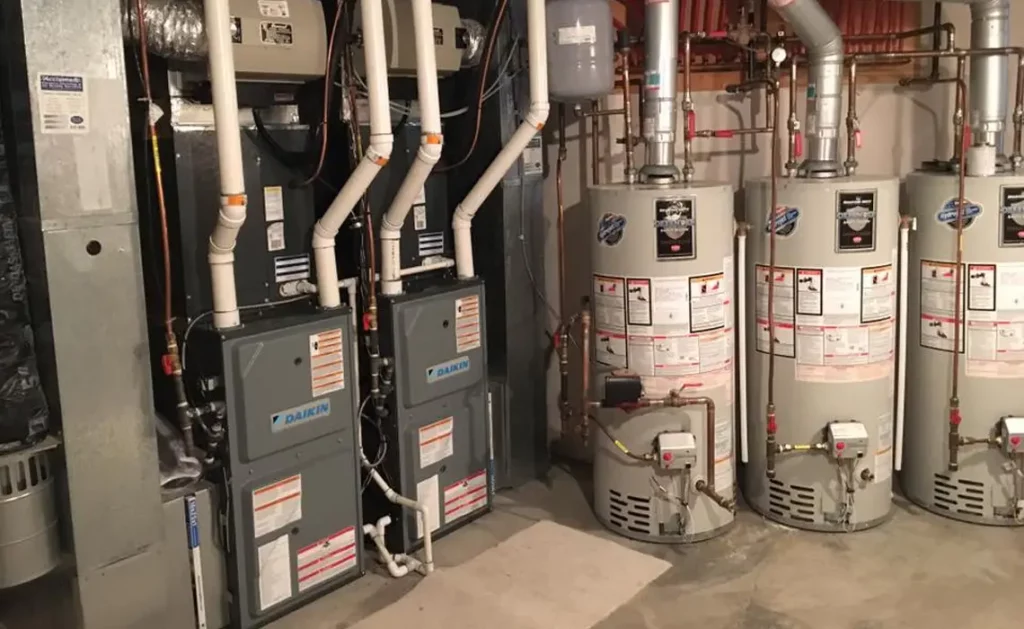
A mech room, short for mechanical room, is an essential yet often overlooked part of your home. This unassuming space serves as the nerve center of your household, where vital mechanical systems reside. These systems are responsible for regulating temperature, providing hot water, and ensuring a steady supply of electricity.
Mech rooms typically house your furnace, which heats your home during cold months, and your air conditioning unit, which keeps it cool during hot summers. They also host your water heater, ensuring you have hot water for showers and household chores. Furthermore, electrical panels are usually situated in this room, distributing power throughout your home.
It’s more than just a storage space for mechanical equipment; it’s the heart of your home’s functionality. Without it, the modern comforts we often take for granted would be compromised.
So, next time you walk by your mech room, remember the vital role it plays in your daily life. From keeping you warm and comfortable to providing the electricity you need, your mech room is an unsung hero in your home.
Mech Room Components
Your mech room houses an array of critical components that work together to ensure your home operates smoothly. Let’s delve into these components to gain a deeper understanding of how they contribute to your comfort and well-being.
First, the furnace is the heating powerhouse of your home. It generates warm air and circulates it through ducts to maintain a comfortable indoor temperature during cold weather.
On the flip side, the air conditioning unit keeps your home cool in hot weather. It removes heat and humidity from indoor air, making your living spaces comfortable during scorching summers.
Additionally, your mech room is also home to the water heater, which ensures you have access to hot water for showers, baths, dishwashing, and other household tasks.
Furthermore, electrical panels are the distribution hubs for electricity in your home. They receive power from your utility company and distribute it to various circuits, ensuring that your lights, appliances, and devices function as needed.
However, depending on your home’s design, your mech room may also contain plumbing connections. These connections can include water supply lines and drainage systems, which are essential for various household functions.
In short, your mech room is like the backstage of a theater, where the complex machinery operates to ensure a seamless performance on the front stage—the rooms where you live, work, and relax.
Mech Room Placement
The placement of your mech room within your home is a crucial consideration that impacts both functionality and aesthetics. While it might not be the first thing you think about when designing or buying a home, it’s a decision that can significantly affect your daily life.
Ideally, a mech room should be centrally located within your home. This central placement ensures that heating, cooling, and water distribution systems can efficiently reach all areas of your living space. It also simplifies maintenance and access for technicians when repairs or inspections are needed.
However, even as you prioritize functionality, you also want your mech room to blend seamlessly with the design and aesthetics of your home. After all, no one wants an eyesore in the middle of their living space.
Balancing these two aspects can be a challenge, but it’s essential for a comfortable and visually pleasing home. Fortunately, modern design solutions and thoughtful planning can help you achieve both goals. By working with architects and designers who understand the importance of mech room placement, you can ensure that this vital space remains accessible yet inconspicuous, enhancing your overall living experience.
Mech Room Maintenance
Proper maintenance of your mech room and its components is vital to ensure their longevity and efficiency. Neglecting maintenance can lead to costly breakdowns and potentially hazardous situations. To keep your home running smoothly and safely, it’s essential to establish a regular maintenance routine.
Regular inspections by qualified technicians are a cornerstone of mech room maintenance. These professionals can identify and address issues before they escalate, helping you avoid unexpected and costly repairs.
During these inspections, technicians will check the condition of your furnace, air conditioning unit, water heater, and electrical panels. They’ll also look for signs of wear and tear, such as corroded pipes or faulty wiring.
In addition to professional inspections, there are several tasks you can perform as a homeowner to keep your mech room in good shape. These include
- Changing Air Filters: Regularly changing the air filters in your furnace and air conditioning unit improves air quality and system efficiency.
- Checking for Leaks: Inspect your water heater and plumbing connections for leaks or drips. Address any issues promptly to prevent water damage.
- Clearing Debris: Ensure that your mech room is free of debris and clutter, allowing easy access for technicians and reducing fire hazards.
- Testing Alarms: If your mech room contains gas-powered appliances, make sure you have working carbon monoxide detectors and smoke alarms in the vicinity.
By staying on top of these tasks and scheduling professional maintenance at least once a year, you can ensure that your mech room functions optimally and serves you well for years to come.
Mech Room Optimization
Optimizing your mech room goes beyond routine maintenance; it involves making strategic improvements to enhance its efficiency and functionality. This optimization can lead to reduced utility bills, a smaller environmental footprint, and a more comfortable living environment.
Proper insulation in your mech room can prevent heat loss during the winter and heat gain during the summer. This, in turn, reduces the workload on your heating and cooling systems, saving you money on energy bills.
Consider upgrading to energy-efficient furnaces, air conditioning units, and water heaters. These modern appliances consume less energy while providing the same level of comfort.
Additionally, Installing a smart thermostat allows you to control your home’s temperature remotely and set schedules for heating and cooling. This not only adds convenience but also helps save energy.
Leaky ductwork can lead to significant energy waste. Sealing ducts in your mech room ensures that conditioned air reaches its destination efficiently.
Proper ventilation in your mech room helps prevent moisture buildup and ensures that the air quality remains high. It’s especially crucial if your mech room contains gas-powered appliances.
However, keeping your mech room clean and well-organized makes it easier to access equipment for maintenance and repairs.
If your water heater is older and less energy-efficient, consider replacing it with a tankless or hybrid model. These options heat water on demand, reducing energy consumption.
Finally, check for drafts and air leaks in your mech room. Sealing these gaps can prevent energy loss and make your home more comfortable.
Energy Efficiency
Energy efficiency is a topic of growing importance in today’s world. As concerns about climate change and rising energy costs continue to mount, homeowners are seeking ways to reduce their energy consumption. Your mech room plays a significant role in this endeavor, as it houses the systems responsible for a substantial portion of your home’s energy use.
Upgraded Appliances: One of the most effective ways to boost energy efficiency in your mech room is to replace outdated appliances with modern, energy-efficient models. New furnaces, air conditioning units, and water heaters are designed to deliver the same level of performance while using significantly less energy.
Regular Maintenance: Proper maintenance ensures that your existing systems operate at peak efficiency. Changing air filters, cleaning coils, and lubricating moving parts are all essential tasks that help your equipment run smoothly.
Programmable Thermostats: Installing a programmable thermostat allows you to set temperature schedules that align with your daily routine. This prevents unnecessary heating or cooling when you’re not at home, reducing energy waste.
Sealing Ductwork: Leaky ducts can lead to significant energy loss. Sealing and insulating ducts in your mech room prevents conditioned air from escaping, ensuring that it reaches its intended destination.
Smart Technology: Integrating smart technology into your mech room can enhance control and efficiency. You can remotely monitor and adjust settings, optimizing energy use.
Energy Audits: Consider scheduling an energy audit for your home. Professionals can identify areas where energy is being wasted and provide recommendations for improvement.
Insulation: Ensure that your mech room is properly insulated. Adequate insulation prevents heat loss in the winter and heat gain in the summer, reducing the workload on your heating and cooling systems.
Lighting: If your mech room has lighting fixtures, consider switching to energy-efficient LED bulbs. LED lighting consumes less energy and has a longer lifespan than traditional incandescent bulbs.
Ventilation: Proper ventilation in your mech room is essential for maintaining indoor air quality and preventing moisture buildup. It also ensures that your equipment operates optimally.
Monitor Usage: Keep an eye on your energy usage. Many utility companies offer tools and apps that allow you to track your consumption and identify areas for improvement.
By implementing these energy-efficient practices in your mech room, you can not only reduce your carbon footprint but also enjoy the financial benefits of lower energy bills. Energy efficiency is a win-win for both your wallet and the environment.
Safety Measures
Safety is paramount when it comes to your mech room, as it houses equipment that can pose risks if not handled properly. Whether it’s a gas furnace, electrical panels, or water heaters, ensuring that these systems operate safely is crucial for the well-being of your home and its occupants.
If your mech room contains gas-powered appliances, such as a furnace or water heater, install carbon monoxide detectors nearby. Carbon monoxide is odorless and colorless, making it difficult to detect without a proper alarm. These detectors can save lives by alerting you to dangerous levels of carbon monoxide.
In addition to carbon monoxide detectors, make sure you have working smoke alarms in your mech room. While the risk of fire in this space is relatively low, having a smoke alarm provides an extra layer of safety.
f you smell gas in your mech room or suspect a gas leak, take immediate action. Turn off the gas supply to the affected appliance, open windows for ventilation, and leave the area. Contact your gas utility company and emergency services if necessary.
Keep the area around your electrical panels clear and well-lit. Avoid overloading circuits, and never tamper with electrical wiring or components unless you are a trained professional.
Ensure that you and your family members know the location of emergency shut-off switches for gas and electricity in your mech room. In case of a malfunction or emergency, quick access to these switches is essential.
If your mech room contains gas appliances, ensure that it is adequately ventilated. Proper ventilation prevents the buildup of gas fumes and ensures the safety of occupants.
Schedule regular inspections by qualified technicians to check the condition of gas lines, electrical wiring, and other components. These inspections can identify potential safety hazards before they become critical.
Consider having a fire extinguisher in or near your mech room. While the risk of fire is low, having an extinguisher on hand can be a lifesaver in case of an emergency.
Ensure that all gas pipes and electrical circuits are clearly labeled for easy identification. This helps technicians and emergency responders navigate the space safely.
Have an emergency plan in place that includes instructions on what to do in case of a mech room-related emergency, such as a gas leak or electrical issue. Ensure that all family members are aware of and understand the plan.
Taking these safety measures seriously is essential for the well-being of your home and those who live in it. Mech rooms, while vital, can pose risks if not managed with care and attention to safety protocols.
Mech Room Myths
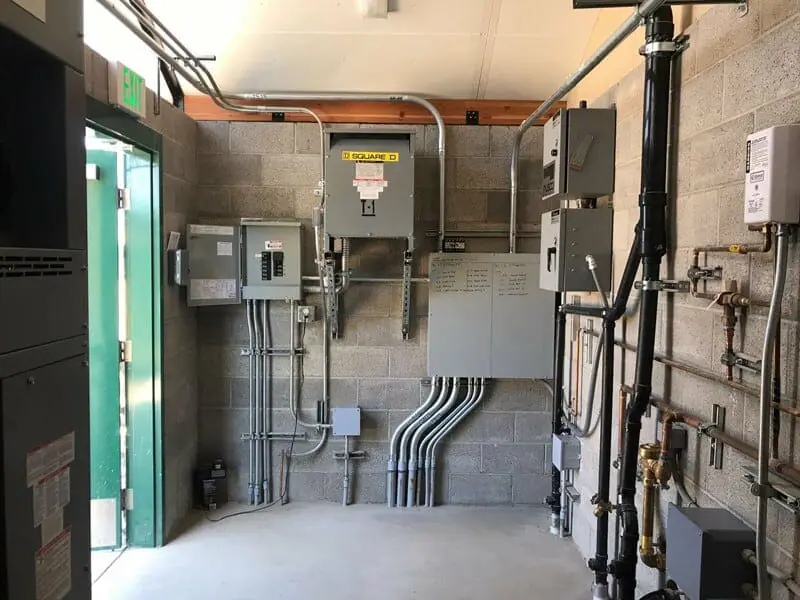
In the world of home construction and maintenance, myths and misconceptions often abound. Mech rooms are no exception.
Myth 1: Mech Rooms Are Unnecessary
Some homeowners believe that mech rooms are unnecessary and that modern homes can function without them.
In reality, mech rooms are essential for housing crucial equipment and systems that regulate your home’s climate, electricity, and water supply.
Without them, your home would lack heating, cooling, and hot water, among other essential amenities.
Myth 2: Mech Rooms Consume Excessive Energy
It’s a common misconception that mech rooms consume excessive energy. While these rooms do house energy-intensive systems like furnaces and air conditioning units, their energy consumption can be controlled and optimized. Upgrading to energy-efficient appliances and implementing smart technology can significantly reduce energy usage.
Myth 3: Mech Rooms Are Always Dark and Dingy
Mech rooms are often portrayed as dark and dingy spaces in popular culture. However, modern mech rooms can be well-lit, organized, and aesthetically pleasing. Design and technology advancements allow homeowners to create mech rooms that blend seamlessly with the rest of their home.
Myth 4: DIY Mech Room Maintenance Is Always Safe
While some mech room maintenance tasks can be performed by homeowners, not all aspects are safe for DIY attempts. Major repairs and complex tasks should be left to trained professionals to avoid safety hazards and potential damage to equipment.
Myth 5: Soundproofing Isn’t Necessary for Mech Rooms
Soundproofing can be crucial for mech rooms, especially if they are located near living spaces. Mechanical systems can generate noise, which can be disruptive to daily life. Proper soundproofing measures can mitigate this issue and enhance overall comfort.
Myth 6: Mech Room Components Don’t Need Regular Inspection
All mech room components, including furnaces, air conditioning units, and electrical panels, benefit from regular inspection and maintenance. Neglecting these systems can lead to breakdowns and higher repair costs in the long run.
FAQ
Where should a mechanical room be located?
A mechanical room should ideally be located centrally within a building for efficient distribution of utilities like heating, cooling, and electricity. It’s often found in basements, utility closets, or designated spaces close to major utility connections.
What are the different mechanical rooms?
Mechanical rooms vary depending on the building’s purpose. Common types include HVAC rooms (for heating and cooling systems), electrical rooms, and utility rooms housing water heaters and pumps.
How do you calculate the size of a mechanical room?
Calculate the size of a mechanical room based on the equipment it will house. Consider space for maintenance, clearances around equipment, and accessibility for technicians.
How much ventilation does a mechanical room need?
The ventilation required for a mechanical room depends on the equipment and its heat output. It’s essential to ensure proper airflow to prevent overheating and maintain system efficiency.
What is the recommended temperature for a mechanical room?
A typical temperature range for a mechanical room is between 50°F to 85°F (10°C to 29°C). Maintaining this range helps equipment function optimally and prevents damage.
What is the most common type of mechanical ventilation?
The most common type of mechanical ventilation is forced ventilation, which uses fans or blowers to move air and ensure fresh air circulation.
What are the basics of mechanical ventilation?
Mechanical ventilation basics include controlling airflow, maintaining proper humidity levels, and ensuring adequate air exchanges to maintain indoor air quality.
What is the best mode of mechanical ventilation for homes?
For homes, balanced ventilation, combining both supply and exhaust ventilation, is often considered the best mode. It provides fresh air while efficiently expelling stale air.
How efficient is mechanical ventilation in improving indoor air quality?
Mechanical ventilation is highly efficient in improving indoor air quality. It continuously brings in fresh outdoor air, removing pollutants and maintaining a healthier environment.
Final words
In conclusion, a mech room in a house is like the backstage of a theater, where the essential systems work their magic to keep your home comfortable and functional. It’s the place where heating, cooling, hot water, and electricity all come together to make your daily life easier.
Remember, taking care of your mech room through regular maintenance and energy-efficient upgrades can save you money and contribute to a greener planet.
So, the next time someone asks, “What is a mech room in a house?” you’ll have the answer – it’s the unsung hero that keeps your home running smoothly.

